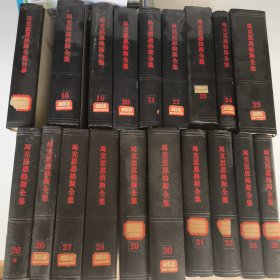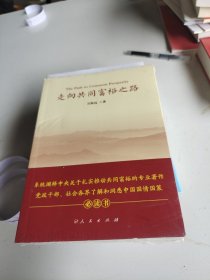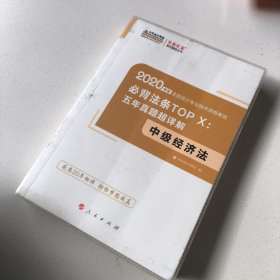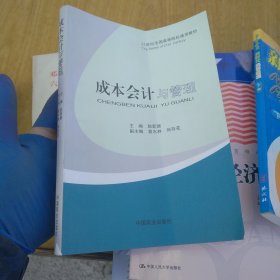
管理与成本会计
¥ 40 4.5折 ¥ 88 八五品
仅1件
安徽阜阳
认证卖家担保交易快速发货售后保障
作者[英]朱瑞
出版社东北财经大学出版社
出版时间1998-04
装帧平装
货号A+1221
上书时间2022-09-19
- 在售商品 暂无
- 平均发货时间 19小时
- 好评率 暂无
- 最新上架
商品详情
- 品相描述:八五品
图书标准信息
- 作者 [英]朱瑞
- 出版社 东北财经大学出版社
- 出版时间 1998-04
- ISBN 9787810443753
- 定价 88.00元
- 装帧 平装
- 开本 其他
- 纸张 其他
- 【目录】
-
Contents
Preface
Part One: Introduction to Management and Cost Accounting
1 The scope of management accounting
The users of accounting information
The meaning of information
Measurement theory
The communication of information
The value of information
The decision-making process
The management process
The role of the management accountant in the management process
Behavioural and organizational aspects of management accounting
Cost accounting and management accounting
Summary of the contents of this book
Guidelines for using this book
Summary
Key terms and concepts
Recommended reading
References and further reading
Key examination points
2 Cost and revenue classification
Cost objectives
Classification of costs
Cost accounting: classification of costs for stock valuation and profit
measurement
Classification for decision-making and planning
Classification for control
Self-assessment questions
Suinmary
Key terms and concepts
Recommended reading
References and further reading
Key examination points
Questions
Part Two: Cost Accumulation for Stock Valuation and Profit Measurement
3 Accounting for materials and labour
Materials control procedure
Pricing the issues of raw materials
Treatment of stores losses
Treatment of transportation costs
Treatment of materials handling costs
Just-in-time purchasing
Accounting for labour
Labour cost accounting
Payroll accounting
Incentive schemes
Accounting treatment of various labour cost items
Dedsion-making and cost control
Self-assessment questions
Summary
Key terms and concepts
Recommended reading
References and further reading
Appendix 3.1: Stores pridng methods
Key examination points
Questions
4 Accounting for overhead expenditure
An overview of the procedure for allocating overheads to products
Blanket overhead rates
Procedure for calculating cost centre overhead rates
An illustration of the overhead allocation procedure
Predetermined overhead rates
Under and over recovery of overheads
Measuring capadty
Significance of volume measures for control
Significance of volume measures for product priring
Overhead absorption rates and new manufacturing technology
Non-manufacturing overheads
Overheads for dedsion-making
Overheads for control
Self-assessment questions
Summary
Key terms and concepts
Recommended reading
References and further reading
Appendix 4.1: Inter-service department transfers
Appendix 4.2: Overhead absorption rates
Key examination points
Questions
5 Accounting entries for a job costing system
Control accounts
Recording the purchase of raw materials
Recording the issue of materials
Accounting procedure for labour costs
Accounting procedure for manufacturing overheads
Non-manufacturing overheads
Accounting procedures for jobs completed and products sold
Costing profit and loss account
Interlocking accounting
Contract costing
Work in progress valuation and amounts recoverable on contracts
Self-assessment question
Summary
Key terms and concepts
Recommended reading
References and further reading
Key examination points
Questions
6 Process costing
Flow of costs in a process costing system
Normal and abnormal losses
Accounting for the sale of scrap
Abnormal gains
Opening and closing work in progress
Previous process cost
Opening work in progress
Weighted average method
First-in, first-out (FlFO) method
Equivalent production and nonnal losses
Equivalent production and abnormal losses
Process costing for dedsion-making and cost control
Batch costing
Self-assessment questions
Summary
Key terms and concepts
Recommended reading
References and further reading
Appendix 6.1: Treatment of normal and abnormal losses when they
occur part way through the process
Key examination points
Questions
7 Joint product and by-product costing
Methods of apportioning.joint costs to joint products
Limitations of joint cost allocations for dedsion-making
Accounting for by-products
By-products, scrap and waste
Defective units
Self-assessment question
Summary
Key terms and concepts
Recommended reading
References and further reading
Key examination points
Questions
8 Absorption costing and vuriable costing
Problem of terminology
External and internal reporting
Variable costing and absorption costing: a comparison of their impact
on profit
Some arguments in support of variable costing
Some arguments in support of absorption costing
The variable costing versus absorption costing debate
Relevant costing
Intemal profit measurement
Current cost accounting
Self-assessment question
Summary
Key terms and concepts
Recommended reading
References and further reading
Key examination points
Questions
Part Three: Infonnation for Decision-making
9 Cost-volume-profit analysis
The economist's model
The accountant's cost-volume-profit model
Changes in fixed costs and selling prices
A mathematical approach to cost-volume-profit analysis
Margin of safety
Constructing the break-even chart
Altemative presentation of cost-volume-profit analysis
Cost-volume-profit analysis assumptions
Cost-volume-profit analysis and computer applications
Application of cost-volume-profit analysis to non-manufacturing
dedsions
Self-assessment questions
Summary
Key tenns and concepts
Recommended reading
References and further reading
Key examination points
Questions
lO Special studies: measuring relevant costs for decision-making
Measuring relevant costs and benefits
Quantitative and qualitative factors
Deleting a segment
Spedal selling-price derisions
Dedsion-making and the mfluence of limiting factors
Make or buy decisions
Replacement of equipment
Conflict between dedsion-making and performance-evaluation models
Problems in detennining the relevant costs of materials
Problems in determining the relevant cost of labour
A comprehensive example
Self-assessment questions
Summary
Key tenns and concepts
Recommended reading
References and further reading
Key examination points
Questions
11 Activity-based costing
Factors leading to the emergence of activity-based costing
Limitations of traditional cost systems
Activity-based cost systems
An illustration of ABC and traditional product costing systems
Impact of volume diversity
Classification of activities
Activity-based profitability analysis
Problems arising with computing unit costs
Resource consumption models
A comparison of activity-based systems with dedsion-relevant costs
An evaluation of activity-based costing
Self-assessment question
Summary
Key terms and concepts
Recommended reading
References and further reading
Key examination points
Questions
12 Accounting information for pricing decisions
The economist's pridng model
Calculating optimum selling prices using differential calculus
Oligopoly and perfect competition
Problems with the economists' model
Cost-based pricing formulae
Limitations of cost-plus pridng
Reasons for using cost-based priring fonnulae
Dedsion-relevant costs for pricing dedsions
Targct costing
Spedfic products made to order
Pridng reviews
Choosing a pridng policy
The impact of new manufacturing technology
Self-assessment question
Summary
Key terms and concepts
Recommended reading
References and further reading
Key examination points
Questions
13 Decision-making under conditions ofrisk and uncertainty
A dedsion-making model
Risk and uncertainty
Probabilities
Probability distributions and expected value
Measuring the amount of uncertainty
Attitudes to risk by individuals
Dedsion-tree analysis
Use of cost infonnation for pridng dedsions under conditions of
uncertainty
Problems with using probability theory in dedsion-making
Cost-volume-profit analysis under conditions of uncertainty
Buying perfect and imperfect infonnation
Maximin, maximax and regret criteria
Portfolio analysis
Self-assessment question
Summary
Key tenns and concepts
Reconunended reading
References and further reading
Appendix 13.1: Cost-volume-profit analysis under conditions of
uncertainty
Key examination points
Questions
14 Capital investment decisions: l
Objectives of capital budgetmg
A dedsion-making model for capital investment dedsions
The theory of capital budgeting
The opportunity cost of an investment
Compounding and discounting
The concept of net present value
Calculating net present values
Constant annual cash inHows
The intemal rate of retum
Relevant cash flows
Timing of cash flows
Comparison of net present value and internal rate of retum
Modified intemal rate of retum
Profitability index
Techniques that ignore the time value of money
Payback method
Accounting rate of retum
Surveys of practice
The effect of performance measurement on capital investment
dedsions
Qualitative factors
Evaluating investments in advanced manufacturing technologies
Self-assessment question
Summary
Key terms and concepts
Recommended reading
References and further reading
Key examination points
Questions
15 Capital investment decisions: 2
A comparison of mutually exclusive investments with unequal lives
Capital rationing
Taxation and investment dedsions
The effect of inflation on capital investment appraisal
Calculating risk-adjusted discount rates
Calculating a project's cost of capital
Weighted average cost of capital
Traditional methods of measuring risk
A summary of risk measurement techniques
Evaluating the lease versus borrowing decision
Authorization of capital investment proposals
Review of capital investment dedsions
Self-assessment questions
Summary
Key terms and concepts
Recommended reading
References and further reading
Key examination points
Questions
Part Four Infonnation for Planning and Control
16 The budgeting process
Stages in the planning process
Why do we produce budgets?
Conflicting roles of budgets
The budget period
Administration of the annual budget
Stages in the budgeting process
A detailed illustration
Sales budget
Production budget and budgeted stock levels
Direct materials usage budget
Direct materials purchase budget
Direct labour budget
Factory overhead budget
Selling and administration budget
Departmental budgets
Master budget
Cash budgets
Final review
Computerized budgeting
The budgeting process in non-profit-making organizations
Incremental and zero-base budgeting
Self-assessment question
Summary
Key terms and concepts
Recommended reading
References and further reading
Key examination points
Questions
17 Operational control and performance measurement
Control systems
Feedback and feed-forward systems
CResponsibility accounting and cost control
Flexible budgeting
Non-financial performance measures
Operational control and performance measurement systems: a summary
Activity-based cost management
The impact of new technology
Control of non-manufacturing costs
Control in non-profit organizations
Management audits
Management by objectives
Operational control and perfonnance measurement in service
organizations
Self-assessment questions
Summary
Key terms and concepts
Recommended reading
References and further reading
Key examination points
Questions
18 Standard costing and variance analyses: l
Operation of a standard costing system
Establishing cost standards
Types of cost standards
Purposes of standard costing
Variance analysis
Material variances
Material price variances
Material usage variance
Joint price usage variance
Total material variance
Labour variances
Wage rate variance
Labour efficiency variance
Total labour variance
Variable overhead variances
Variable overhead expenditure variance
Variable overhead effidency variance
Similarities between materials, labour and overhead variances
Fixed overhead expenditure or spending variance
Sales variances
Total sales margin variance
Sales margin price variance
Sales margin volume variance
Difficulties in interpreting sales margin variances
Recondling budgeted profit and actual profit
Standard absorption costing
Volume variance
Volume effidency variance
Volume capadty variance
Summary of fixed overhead variances
Reconciliation of budgeted and actual profit for a standard absorption
costing system
Performance reports
Self-assessment questions
Summary
Key terms and concepts
Recommended reading
References and further reading
Key examination points
Questions
19 Standard costing: 2. Further aspects
Direct materials mix and yield variances
Sales mix and sales quantity variances
Recording standard costs in the accounts
Accounting disposition of variances
Critidsms of standard costing variance analysis
Variance analysis and the opportunity cost of scarce resources
The investigation of variances
Types of variances
Simple rule of thumb cost investigation models
Statistical models not incorporating costs and benefits of investigation
Dedsion models with costs and benefits of investigation
Empirical evidence
Quantity variances
Self-assessment questions
Summary
Key terms and concepts
Recommended reading
References and further reading
Key examination points
Questions
20 Behaeioural aspects of accounting control systems
The use of budgets as targets
The use of accounting control techniques for performance evaluation
Partidpation in the budgeting and standard setting process
Bias in the budget process
Management use of budgets
Condusion
Summary
Key terms and concepts
Recommended reading
References and further reading
Key examination points
Questions
Part Five: Manufacturing Systems, Strategies and Technologies
21 Manufacturing systems, strategies and technologies: implications for
the design ofmanagement accounting systems
Altemative production systems
Advanced manufacturing technologies
Production management strategies
Material requirements and manufacturing resources planning systems
The just-in-time approach
Optimized production technology
Factors influendng altemative production strategies
The influence of manufacturing systems and production strategies on
the design of product cost accounting systems
Product costs for dedsion-making
Operational control and performance measurement
Sununary
Key terms and concepts
Recommended reading
References and further reading
Key examination points
Questions
Part Six: The Application of Quantitative Methods to Management Accounting
22 Mathematical approaches to cost estimation
Non-mathematical techniques
Mathematical techniques
Tests of reliability
Multiple regression analysis
Requirements for using mathematical techniques
Problems that may arise when using mathematical cost equations
A summary of the steps involved in estimating cost functions
Cost estimation when the leaming effect is present
Estimating incremental hours and incremental cost
Leaming-curve applications
Cost estimation techniques used in practice
Self-assessment questions
Sununary
Key tenns and concepts
Recommended reading
References and further reading
Appendix 22.1: Partial table of t-values
Key examination points
Questions
23 Quantitative models for the planning and control of stocks
Why do firms hold stocks?
Relevant costs for quantitative models under conditions of certainty
Determining the economic order quantity
Assumptions of the EOQ formula
Application of the EOQ model in determining the length of a
production run
Quantity discounts
Detennining when to place the order
Uncertainty and safety stocks
The use of probability theory for detennining safety stocks
Control of stocks through classification
Other considerations
Materials requirements planning
Just-in-time purchasing and manufacturing
Self-assessment questions
Summary
Key terms and concepts
Recommended reading
References and further reading
Key examination points
Questions
24 The application of Unear programming to management accounting
Single-resource constraints
Two-resource constraints
Linear programming
Graphical method
Simplex method
Interpreting the final matrix
Opportunity cost
Substitution process when additional resources are obtained
Use of linear programmmg
The use of linear programming in capital budgeting
Practical problems in applying linear programming
Application to other business problems
Self-assessment questions
Summary
Key terms and concepts
Recommcnded reading
References and further reading
Key examination points
Questions
Part Seven: Divisional Perfonnance Evaluation
25 Measuring divisional profitability
Functional and divisionalized organizational structure
Profit centres and investment centres
Advantages of divisionalization
Disadvantages of divisionalization
Prerequisites for successful divisionalization
Distinguishing between the managerial and economic perfonnance of
the division
Altemative divisional profit measures
Retum on investment
Residual income
Determining which assets should be included in the investment base
The impact of inflation
The impact of depredation
The effect of performance measurement on capital investment decisions
Determining the divisional cost of capital
Use of non-accounting measures
Self-assessment question
Summary
Key tenns and concepts
Recommended reading
References and further reading
Appendix 25.1: Recondling short- and long-term residual income
measures
Key examination points
Questions
26 Transfer pricing in divisionalized companies
Objectives of transfer pridng
Market prices
Setting transfer prices when there is no market for the
intermediate product
imperfect market for the intermediate product
Effect of cost-plus transfer prices
Theuse of linear programming in establishing optimum transfer prices
Transfer pridng conflicts
Resolving transfer price conflicts
Negotiated transfer prices
Intemational transfer pricing
Transfer pridng recommendations
Surveys of company practice
Self-assessment question
Summary
Key terms and concepts
Recommended reading
References and further reading
Appendix 26.1: Economic analysis of transfer pridng
Key examination points
Questions
Part Eight: Past, Current and Future Developments in Management Accounting
27 Past, current andfuture developments in management accounting
practice
The history of management accounting
Management accounting research
The gulf between theory and practice
Critidsms of management accounting practice
The future of management accounting
Summary
Key terms and concepts
Recommended reading
References and further reading
Appendices
Appendix A: Present value factors
Appendix B: Cumulative present value factors
Appendix C: Areas in tail of the nonnal distribution
Appendix D: Capital recovery factors (equal annuity rate)
Appendix E: Future value of fl at the end of n periods
Notes
Answers to Self-Assessment Questions
Index
Readers' questionnaire
点击展开
点击收起
相关推荐
— 没有更多了 —




















以下为对购买帮助不大的评价